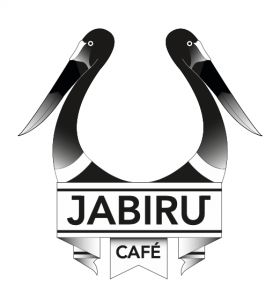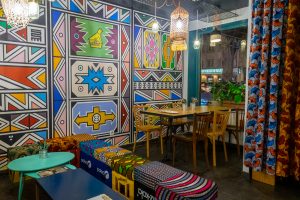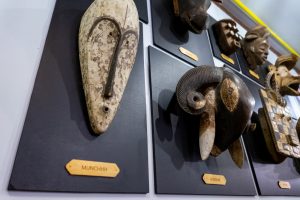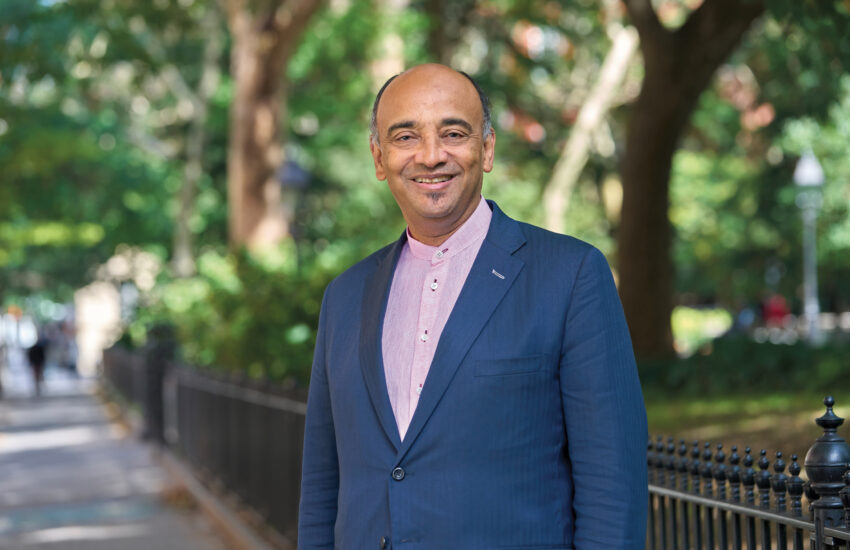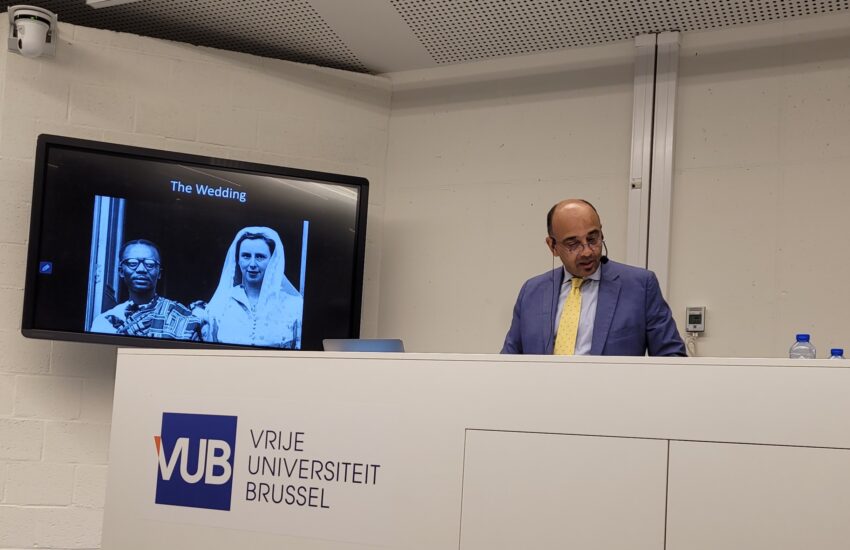Food as Education: An Interview with Gilles Dolatabadi
Written by Tola Ositelu
If anyone embodies what it means to be Afropean it’s Strasbourg-based restaurateur, Gilles Dolatabadi. A polyglot of Togolese, Iranian and French origin, Dolatabadi has spent much of his career living and working all over Africa and Europe. In 2018 he returned to his beloved Alsace, France to open an Afropean-themed eaterie – Jabiru – in Strasbourg’s hipster district, Krutenau. One afternoon in late January, over a plate of steamed plantain and traditional shitoh sauce, Gilles sat down to discuss the genesis of the project, the pedagogical role of art, food and culture, surmounting French bureaucracy and why he prefers the term Afroblend to fusion food.
First a little background. You were born in Togo. You moved to Europe at what age?
We came to France when I was 8 years old. We spent five years in Paris, then moved to Strasbourg.
Where do you most feel at home in the world?
I don’t have just one place where I feel at home, I have several.
Such as?
Strasbourg (Of course. [laughs])…Harare, Zimbabwe. It’s my favourite [African city].
Why?
I was really surprised the first time I was there. I knew Zimbabwe was a big country but I went when Mugabe was still in power. There were all these crises; finance, disease…I was expecting things to be very bad. But when I arrived, I found people were very happy; enjoying [life] and using whatever they could to make the best of it. The weather was good, the people are amazing. Even if you don’t know an area, you can still find your own thing.
Zimbabwe was a culture shock [in other ways]. Let’s say, I found the food to be less elaborate than in Western Africa. It was good for me to learn that not everywhere is the same.
What other places are close to your heart?
I lived in Durban for six months and really enjoyed it.
I was born in Lome, Togo but I don’t call it home yet. As a mulatto, people there still see me as a stranger even though I speak the local language [Ewe]. Maybe I need to go again…
You mentioned Durban, which has a high mulatto population. Is that one reason you felt at home?
In Southern Africa – Zimbabwe, Mozambique, South Africa – people are used to mixed-race populations. It’s not really about that. The level of life is also close to what I know. I feel really comfortable there. I can go out with locals and enjoy my time with them. When I go to some other countries, such as in Western Africa, it’s different. You really feel the [class] gap. For me, there is a very good middle class in Southern Africa. In the Western African context you only see that in countries like Ghana, Ivory Coast and Senegal.
You describe yourself as Afropean. What does that mean to you?
There is no one definition. Afropean can be a European with African origins, living in Europe or somewhere else. It can be someone who has no African origins but lived for many years in Africa. I have many friends who are French or Lebanese. They were born in Ivory Coast, Ghana or Nigeria. These are the countries they know. Although now in Europe, they’re [still] close to African culture. For me, they are also Afropean.
So for you, would someone like [French-Algerian author] Albert Camus be Afropean, as a ‘black foot’?
Algeria is different. The impression I’ve had speaking with some Pieds Noirs [“Black Feet”], is that it was once they left Algeria that they found out that they were African. Whilst they lived there, they were a kind of caste; “We are the French in Algeria because Algeria is French”. It’s when they had to go back to France that they realised they were also foreigners in a certain sense.
You weren’t always in the catering business. What were you doing before?
After my studies I did a VIE, which is a programme organised by the government to work with a French company overseas. I did that with a removal company that sent me to South Africa, Zimbabwe, Zambia, Kenya, Liberia, Malawi and Sierra Leone. I specialised in countries with logistical complexity and that were English-speaking.
I did that for just over two years. Later on I worked for another logistics company but this time in oil and gas. I was in Angola for two years. This is where I learned Portuguese. After Angola I came back to Strasbourg, to find out if I wanted to continue on that route or do something else. I returned to oil and gas, working for a large Franco-American company. I was involved in a big project where I split my time between Paris and Ghana for two years. Then I worked on a Libyan project; first in Aberdeen, Scotland and then Malta because of the particular situation in Libya at the time.
Why did you make the change?
I missed Strasbourg. I’d worked for a few years on the African continent. There I learnt a lot of things; food, culture, history, people… It was challenging for me because I still loved my work in logistics. I still wanted to be in Africa but my family is in Strasbourg.
My mother is a cook. We decided a few years ago that I should come back to Strasbourg but bring Africa here. The idea was to offer a place where people could have Afroblend food and drink and a warm welcome, within a contemporary African ambience. Strasbourg is open-minded. People don’t know a lot about these African influences, but they are eager to discover. It is a “mulatto” city. For many years we were between Germany and France. Now, being Alsatian is its own cultural identity. People are proud of that.
Why do you call it a café and not a restaurant?
You can eat, or just have a drink or talk with people. With a restaurant people usually just go to eat without sharing with others. Here it’s a place where people can talk about culture, food, drink, their travels around Africa or Europe. A café is much more appropriate for what I have in mind. For now, I’m both manager and waiter. My mother, Marie, is the chef.
Why is the café called Jabiru?
It’s a [species of] stork. This bird is one of the symbols of Alsace. We picked up that [theme] but used the logo of a stork that is native to Western and Southern Africa.
Why do you prefer the term ‘Afroblend’ to fusion food?
For me fusion food is just about food. When we hear that term it’s already in a box. We’re talking about food from different locations that we’re going to mix. Afroblend is about many things; food, people, culture, music, art… [With the café] we’re talking about ‘blend’ even between African cultures. For instance, there is one dish that is made with Chichinga – a way of cooking beef in Togo, Ghana and Benin – and it’s served with Kenyan Chapatti. This originated from the Indians who migrated to Eastern and Southern Africa; from Kenya to the Mauritius. It’s a mix of those countries on one plate. We serve it with Aloko – fried plantain that is not yet ripe –or Boule-Boule which is Cassava. Afroblend can be a mix within Africa itself or with somewhere else. There are some dishes that I mix with Jamaican pepper…as long as it goes well with the taste, we’re fine with that.
Would you therefore describe Afroblend as a new movement, like the early days of Hip-Hop? Afroblend is perhaps the artistic or culinary expression of being Afropean?
I think you describe it well. It’s not something new. It was already there, we just didn’t have the words for it. Afropean is Europe and Africa. Within that I can say I have an Afroblend culture; within that I eat Afroblend. Being Afropean is restricted to within the European area. You have to tick a box, which I don’t like doing. However, Afroblend is a good word to describe many things. [For example] I am fine eating fried plantain with salt coming from Peru, where there are also Afro-descendants.
You have lived all over Europe and Africa. You could have opened the café anywhere. Why Strasbourg? It’s not a big city like Paris, Lyon or Marseilles…
That’s an easy question. I’m originally from Strasbourg. That’s one aspect. Secondly, my family and partner are here. I really wanted to have a social and family life in the city where I feel at home, with the people I love around me. The third point is that Strasbourg is a European capital. Like Brussels, it has some European institutions. I want it to reach the level of the big [French] cities.
Lastly, there wasn’t much on offer for Afropeans in Strasbourg. When I was younger, there was only one ‘African street’ with a few shops. The African community was not well-developed although there are a lot here. I thought, “I have to do something in Strasbourg for people like me; mixed-race, Afropean, people who’ve been to Africa and still miss it, people who are about to go to the continent…” This place is now able to give that.
There’s a pedagogical aspect to the project too. Someone who doesn’t know what a Baobab is, I have a fruit from the tree here. They can touch it. Afterwards they want to try it. When they leave, they’ve learned something. This is contributing to tolerance. Often when there’s a culture clash, it’s because people are ignorant. ‘Akwaba’ is written on the door which means ‘welcome’ in Twi. By coming here, with the welcome we give them, customers leave knowing something. They want to now know more. I have had customers who were thinking of going on holiday. After coming to the café they consider going to an African country. I have guide books for places that don’t have a mass tourism industry. Angola, Sierra Leone, Malawi…I chose those type of countries to show there is much more to African holidays than safari or white sand beaches. We all love that but there are other places to visit with so much to offer.
How do you source ingredients that aren’t readily available in the Alsace region ?
Everything that is dry comes from Africa, arrives in Paris and is trucked to Strasbourg. Everything that is fresh I get from the African shops here.
You were involved in every detail of the design of the café; from conceiving the logo to the minutiae of the interior décor. Talk us through some of the themes and concepts of the layout.
Whatever you see would have been inspired by a country I lived in. There’s a Ndebele fresco. It’s inspired by the work of [South African artist] Esther Mahlungu. She’s an amazing woman. The fresco touches me particularly. Mahlungu is one of the huge artists [of the Ndebele tradition]. We’ve put a heart tribute to her in the mural. There’s also a yellow bird that you find on the Zimbabwean flag.
There are Adinkra symbols which come from the Akan people of Ghana and Cote D’Ivoire. They’re translated into English, French and German.I’ve only selected some symbols; there are many. I wanted to show that there is much more to Africa than giraffes and rhinos. We have our own philosophies.
[GD gestures behind him] Here we have masks from Western and Southern Africa. Fang of Gabon, some Bayolea from Cote d’Ivoire… I give them names.
I’ve noticed. Where do they come from?
My imagination [laughs]. Sometimes people work out why I have given them a particular name, sometimes I need to help them. There is always also a second and third level of meaning. For instance, the mask has six eyes: “Big Brother is watching you…”. The second layer [of meaning] is about the dictatorships we still have in some parts of Africa. The Punu [Gabon] mask here, it’s a woman. She has some Asiatic features. I called it ‘Chun-Li’ which is a character from the Street Fighter video game. For a long time she was the only female. When she won, it would say “I am the strongest woman in the world”. For me, this is feminist. This is also homage to all the struggles and ordeals the African woman must overcome or endure before being accepted. The third degree of meaning here is Chine-Afrique; the geopolitical situation [involving China] that we have on the Continent now.
What for you has been the greatest challenge in terms of setting up the restaurant?
In France, it’s the administration for sure! You can have the best idea, the funds and the people but there are so many deadlines, so many people to see and applications to do. You really have to follow it up or you can have big issues.
What would your advice be to someone looking to make the leap as you have done?
You have to be surrounded by the right people. Choose well. As I said, you can have the best idea but if you’re not well-supported, it can go wrong. That’s why my personal Adinkra symbol is Woforo Dua Pa A; when you climb a good tree. It means if you have an objective you feel is good, you need to start. If it’s meant to be, whatever you need to reach that aim will come together along the way. I find it very positive. This [Adinkra philosophy] helped me a lot.
Since opening in autumn 2019, what has the response been like? Any particular feedback that stays in your mind?
The feedback is very positive on Google, Trip Advisor, Facebook, Instagram…When people come here, they don’t know what to expect; both Europeans and non-Europeans. This is what I love. People are discovering Gnamakoudji – drinks made with ginger – as well as Baobab juice. There’s a drink that I call Drakensberg, which is made with green Rooibos and violet syrup.
People are asking for more and even giving me ideas. I’ve been asked to do a café littéraire, for instance; a place where African writers can launch their new books.
Finally, what are your plans for the Jabiru project this new year and decade?
My plans are to continue the way we’ve started. My way of doing things is slowly but surely. I don’t want to do too much at the beginning and have to reduce activity later. We’ll still provide a warm welcome, Afroblend food and drinks. I hope to be able to be open for longer hours. We’d like to host events like [the above-mentioned] café littéraire and live music, if possible. We have plans to tour food events linked to Africa – in Berlin and London, for example – so we can show Strasbourg also has something to offer.
Jabiru Afroblend Café – 60 Rue de Zurich, Strasbourg, France.
This is an edited version of a longer interview.


